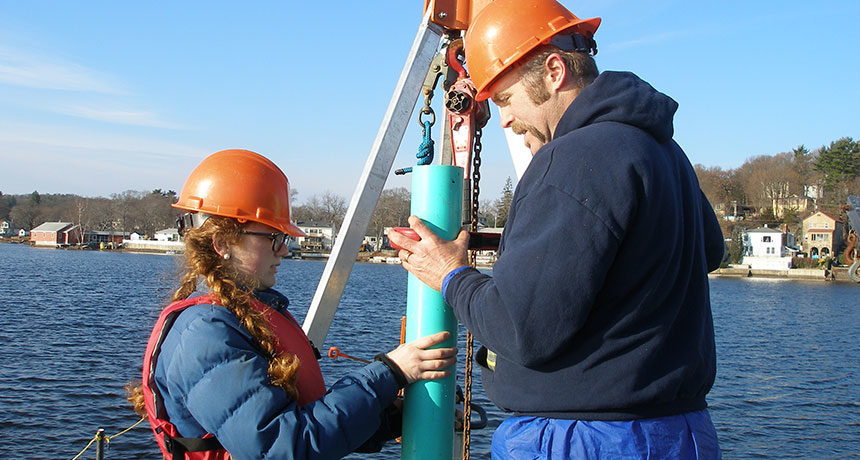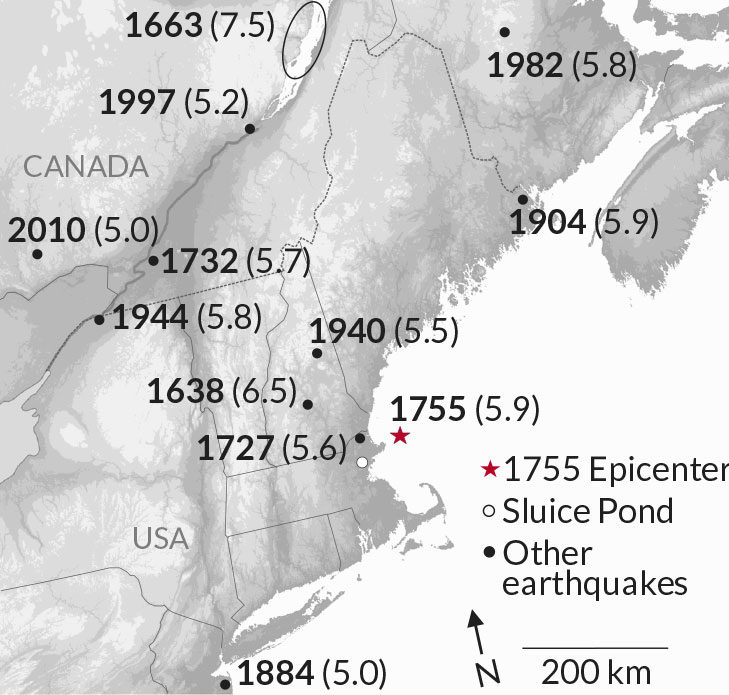
The history of New England's most damaging earthquake is written in the mud beneath a Massachusetts pond. Researchers identified the first sedimentary evidence of the Cape Ann earthquake, which in 1755 shook the East Coast from Nova Scotia to South Carolina. The quake, estimated to have been at least magnitude 5.9, took no lives but damaged hundreds of buildings.
Within a mud core retrieved from the bottom of Sluice Pond in Lynn, Mass., a light brown layer of sediment stands out amid darker layers of organic-rich sediment, the researchers report March 27 in Seismological Research Letters. The 2-centimeter-thick layer contains tiny fossils usually found near the shore, as well as types of pollen different from those found in the rest of the core. Using previous studies of the pond's deposition rates, geologist Katrin Monecke of Wellesley College in Massachusetts and her colleagues determined the layer dates to between 1740 and 1810.
That light-brown layer is likely a turbidite, sediment jumbled up by a sudden lake slope failure, the study says. There are no other turbidites in the core, which spans about 400 years, suggesting the slopes held fast through floods and hurricanes. But the Cape Ann quake was likely a strong enough trigger to cause the slope failure.
Colonial quake
The 1755 Cape Ann quake (star marks its epicenter) is not the only temblor to shake New England. Black dots show the locations of other known or suspected quakes from 1638 to 2017. The white circle marks Sluice Pond, where researchers dug up a sediment core to look for a signature of the 1755 temblor. The Charlevoix Seismic Zone (black oval) has seen several damaging quakes, including a magnitude 7.5 in 1663.Though the eastern United States is not at the seismically active edge of a tectonic plate, it has occasionally had its ground-shakers . The study suggests other East Coast lakes and ponds may contain evidence of prehistoric quakes, giving researchers a new way to estimate their frequency.
The Cape Ann quake also left its mark on the colonists, inspiring poems that suggested the temblor was a warning from a wrathful God. Harvard University scientist John Winthrop chronicled witness accounts of the quake in a 1757 paper to the Royal Society of London. "The earthquake began with a roaring noise," Winthrop quoted one man as saying, "like thunder at a distance."




Reader Comments
to our Newsletter